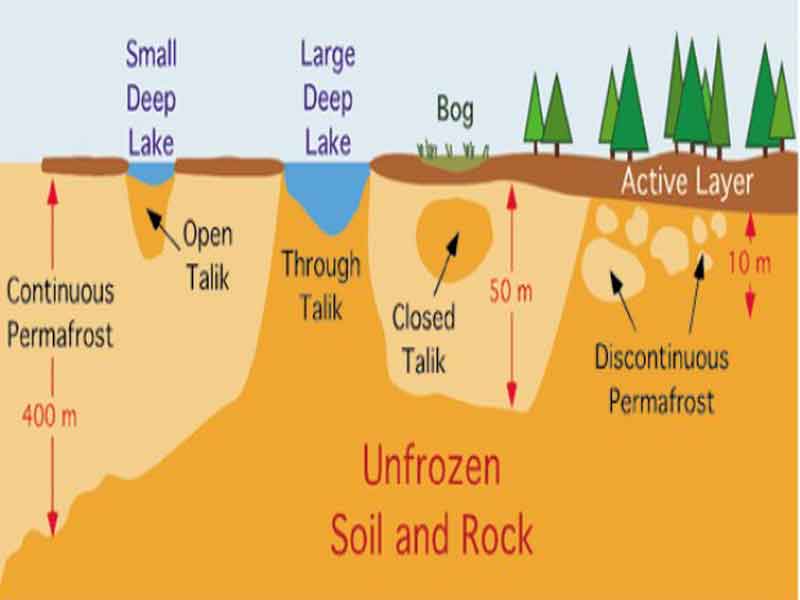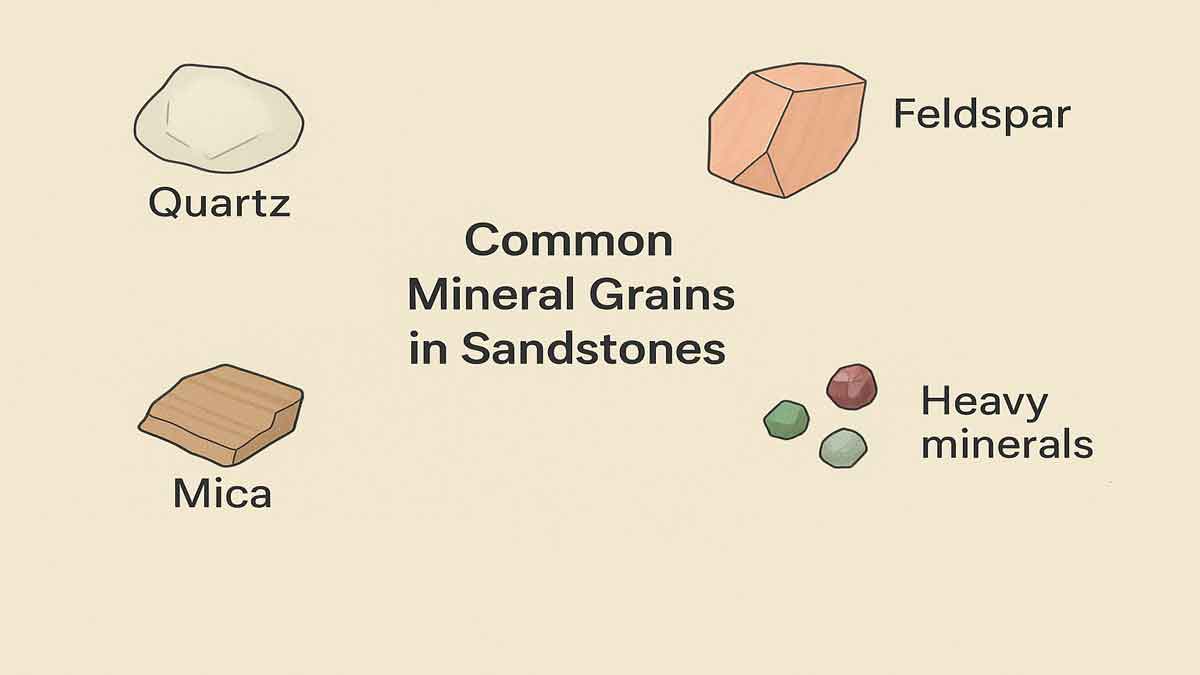What is permafrost?
Permafrost is a condition where a layer of soil, sediment, or rock below the ground surface remains frozen for a period greater than a year. Permafrost is not a necessary condition for creating periglacial landforms. However, many periglacial regions are underlain by permafrost, and it influences geomorphic processes acting in this region of the world.
Where is permafrost found?
It is found in about 25 percent of the Earth’s non-glaciated land surface. It occurs wherever the mean annual ground temperature is less than 0° Celsius. The southern limit in Canada generally correlates with an annual surface air temperature of -8° Celsius.
In some areas, It can be up to 1500 meters deep. Common depths of permafrost are several hundred meters. Most deposits of permafrost have an upper active layer that is between 1 to 3 meters thick. This active layer is subject to a cyclic thaw during the summer season.
In some places, localized unfrozen layers or taliks are located on top, underneath, or within masses of permafrost. Often in continuous permafrost areas, taliks are found under lakes because of the ability of water to store and vertically transfer heat energy.
The vertical extent of the taliks found under lakes is related to the depth and volume of the overlying water body. Larger water bodies can store and transfer more heat energy downward. A closed talik is unfrozen ground that is found within a mass of permafrost. Closed taliks can develop when lakes fill in with sediment and become bogs.
With the removal of the open water, summer solar radiation is now being received by a surface with a lower specific heat and poor vertical heat transfer. As a result, soil near the surface begins to freeze solid, encasing a zone of unfrozen soil in permafrost. Closed taliks can also form because of groundwater flow.
Types of permafrost:

Five different types of permafrost have been recognized.
1. Continuous permafrost:
It exists over the landscape as an uninterrupted layer. Zones of permafrost with numerous scattered small thawed areas are called discontinuous permafrost.
2. Discontinuous permafrost:
It usually exists as an extensive marginal zone at the edge of continuous permafrost.
3. Sporadic permafrost:
It occurs where small islands of permafrost are scattered in generally unfrozen areas.
4. Alpine permafrost:
It is found at higher elevations in areas outside where continuous or discontinuous permafrost is common.
5. Subsea permafrost:
It is frozen ground that exists in the sediments beneath seawater. Large areas of subsea permafrost exist along the northern coastal edge of Russia, Alaska, and parts of northern Canada.






